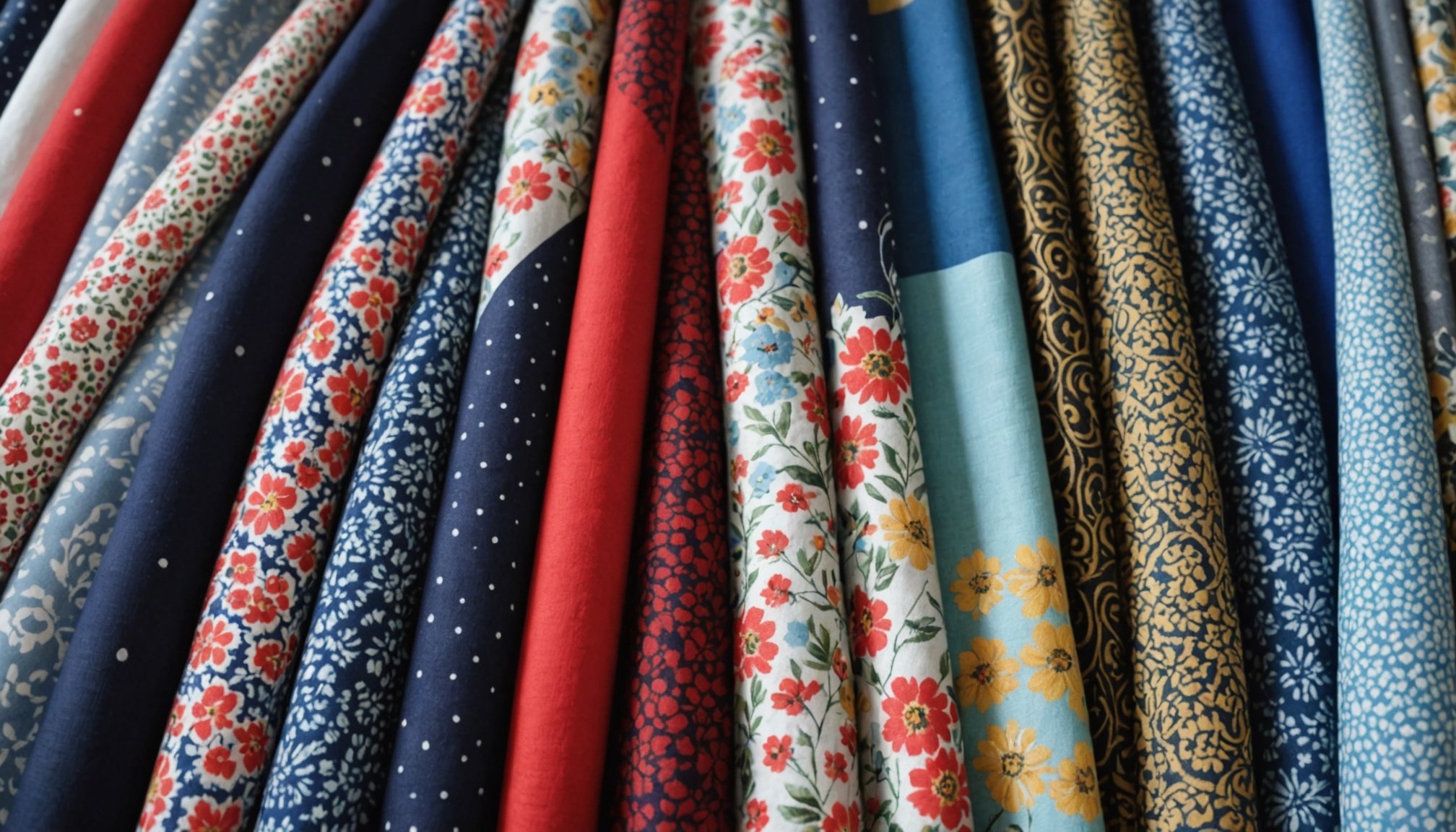Suitable Fabrics for Varying UK Climates
Understanding the changing UK weather and its effect on selecting the right fabrics is key to creating adaptable fashion.
Lightweight Fabrics for Summer
In summer, breathable materials are paramount. Such fabrics ensure comfort without overheating. Linen, for example, is a popular option for its airy nature, allowing the skin to breathe. Cotton is another excellent choice, known for its lightness and ability to wick away moisture. For those unpredictable summer days, layering with thin, weather-resistant fabrics like nylon can effectively balance style and adaptability. Always have a light scarf or shawl ready as layering pieces.
Additional reading : Mastering cobblestone streets: must-know tips for choosing the ideal heels in charming uk towns
Warm Fabrics for Autumn and Winter
As the temperature drops, the focus shifts to insulating materials. Wool stands out for its heat retention qualities, making it suitable for winter. Fleece and tweed fabrics are also preferred for their durability against rain and wind. Layered clothing can be crafted with materials such as heavy cotton, providing both warmth and style. Incorporating these materials ensures comfort and protection against inclement weather.
Versatile Fabrics for Transitional Seasons
In transitional periods, it’s best to go for versatile fabrics that can adapt to varying conditions. Blends like poly-cotton offer flexibility, while mixing wool with lighter materials can achieve functional style. Practical DIY fashion might involve creating garments that suit multiple seasons, ensuring your clothing remains fashionable yet functional all year round.
This might interest you : Illuminate Your Winter Fashion: Innovative Ways to Infuse Neon Colors for a Striking UK Look
Understanding the UK’s Weather and Its Impact on Fashion
Navigating the UK weather is crucial for fashion choices, given its often unpredictable nature. With mild, wet winters and temperate, humid summers, the UK climate necessitates careful seasonal trends planning. Winters encourage a focus on heat-retaining fabrics, while summer calls for breathable options. The transitional periods in spring and autumn require climate considerations, favouring versatile fabrics adaptable to fluctuating temperatures.
Fashion enthusiasts often harness the shifting seasons to showcase DIY fashion ingenuity. For example, a well-insulated coat crafted from layered wool can be stylish and efficient during chilly months. Alternatively, employing cotton blends in the spring can address both comfort and function under varied conditions. These choices reflect how changing weather conditions drive DIY fashion designs, allowing for creative expression while maintaining practicality.
When considering fabrics, remember the significance of climate considerations. Embrace materials like fleece and tweed in winter and linen or poly-cotton blends in warmer months. Such adaptability in fabric choice is key to meeting both style and functionality needs across the UK’s diverse weather spectrum. Ultimately, fashion that accommodates changing weather stands the test of time and trend, keeping wardrobes relevant and current.
Understanding the UK’s Weather and Its Impact on Fashion
The UK weather presents a unique challenge for anyone passionate about fashion. With its mix of mild, wet winters and temperate, humid summers, the UK’s climate demands an astute understanding of seasonal trends. A good starting point is recognising how unpredictable conditions require adaptable wardrobe choices. As you navigate these changes, fabric selection becomes integral to aligning with seasonal expectations.
Climate considerations should be front of mind when designing fashion pieces. During colder months, fabrics like wool and fleece are indispensable due to their insulating properties. However, the balmy summer days call for breathable materials such as linen and cotton to prevent overheating, allowing for comfort and style. This balance between fabric and function ensures that you are prepared, regardless of what Mother Nature decides.
DIY fashion can particularly thrive in adapting to weather fluctuations. Crafting a transitional jacket with mixed fabric types or integrating nylon linings for rain resistance can lead to practical yet chic designs. By understanding the UK weather in detail, you enhance your ability to make informed fashion decisions. Thus, an insightful approach to weather patterns not only enriches your style but also supports sustainable fashion practices.
Understanding the UK’s Weather and Its Impact on Fashion
The UK weather is characterised by its unpredictable climate, featuring mild, wet winters and temperate, humid summers. The ever-changing conditions necessitate strategic seasonal trends in fashion. During colder months, heavier, insulating fabrics like wool are ideal, as they retain heat and protect against the cold. In contrast, summers require breathable materials such as linen and cotton, which maintain comfort without sacrificing style.
Adaptability is further exemplified in climate considerations for transitional periods. These seasons demand fabrics that can effortlessly switch between varying conditions. Strategic layering plays a crucial role, allowing fashion enthusiasts to mix and match different fabric types to accommodate fluctuating temperatures. Blending materials like poly-cotton or incorporating nylon can enhance a garment’s adaptability.
Moreover, the UK weather significantly influences the approach taken in DIY fashion design. By crafting garments that utilise versatile materials, one can effortlessly adapt to diverse weather patterns. This adaptability not only ensures functional wear but also enables the expression of personal style throughout the changing seasons. The insightful integration of fabric choice into DIY fashion results in creations that reflect both savvy fashion sense and awareness of environmental conditions.
Crafting Tips for DIY Fashion Projects
Creating DIY fashion pieces requires a blend of creativity, precision, and the right tools. Essential crafting techniques can make your projects both successful and enjoyable. Begin with the basics: a quality sewing machine, fabric scissors, and measuring tools. Understanding fabric types is crucial, as they influence techniques and project outcomes.
When working with various fabrics, always consider how their properties affect your crafting. For example, breathable materials like cotton are easier to sew, whereas weather-resistant fabrics such as nylon may require specialized needles. Furthermore, selecting appropriate threads enhances durability and appearance, ensuring your garments withstand seasonal trends.
To overcome common sewing challenges, always test stitches on scrap fabric first. This practice helps adjust tension settings, especially when dealing with thicker materials or blends. Adopting time-saving techniques such as pinning strategically will prevent fabric slips and misalignments.
Developing your skills involves patience and practice, but readily available resources can aid your learning. Online tutorials and workshops are excellent for mastering new crafting techniques. Engaging with a community of fellow crafters offers support and inspiration, driving the passion for DIY fashion. As you gain confidence, experimenting with different weather conditions in your designs will create dynamic, adaptable garments.
Understanding the UK’s Weather and Its Impact on Fashion
The UK weather is infamous for its variability, with notable patterns throughout the year that directly influence seasonal trends. Winters tend to be mild and wet, demanding fabrics that provide insulation and moisture protection. Summers, however, call for breathable materials due to the temperate and humid conditions. These weather patterns necessitate smart climate considerations when choosing fabrics to ensure both comfort and style.
Fabric choice is critical for ensuring season adaptability. During the colder months, materials like wool and tweed offer warmth against the chill, while spring and summer see a preference for linen or cotton to maintain breathability. Layering with weather-resistant fabrics like nylon can provide additional protection during unpredictable weather. Understanding these fabric dynamics can enhance both DIY fashion design and general wardrobe planning.
For those venturing into DIY fashion, UK weather creates both challenges and opportunities. Creating garments that incorporate different fabrics for varied weather not only showcases sewing skill but also a keen understanding of climate considerations. By blending practicality with creative expression, fashion enthusiasts can craft designs that transition seamlessly between seasons, offering both style and functionality. Embracing the UK’s climate in fabric selection ensures a wardrobe that is as adaptable as the weather itself.








